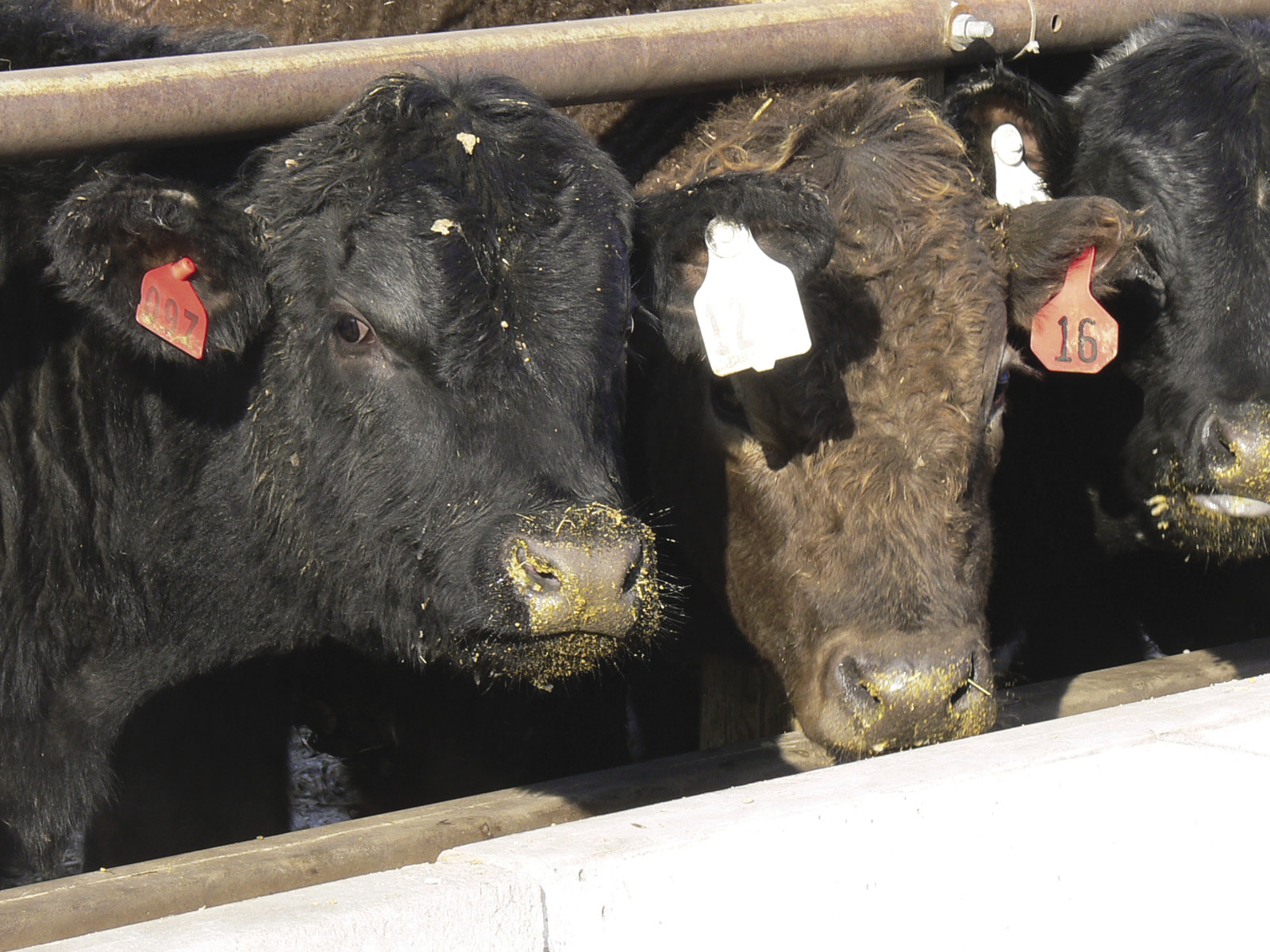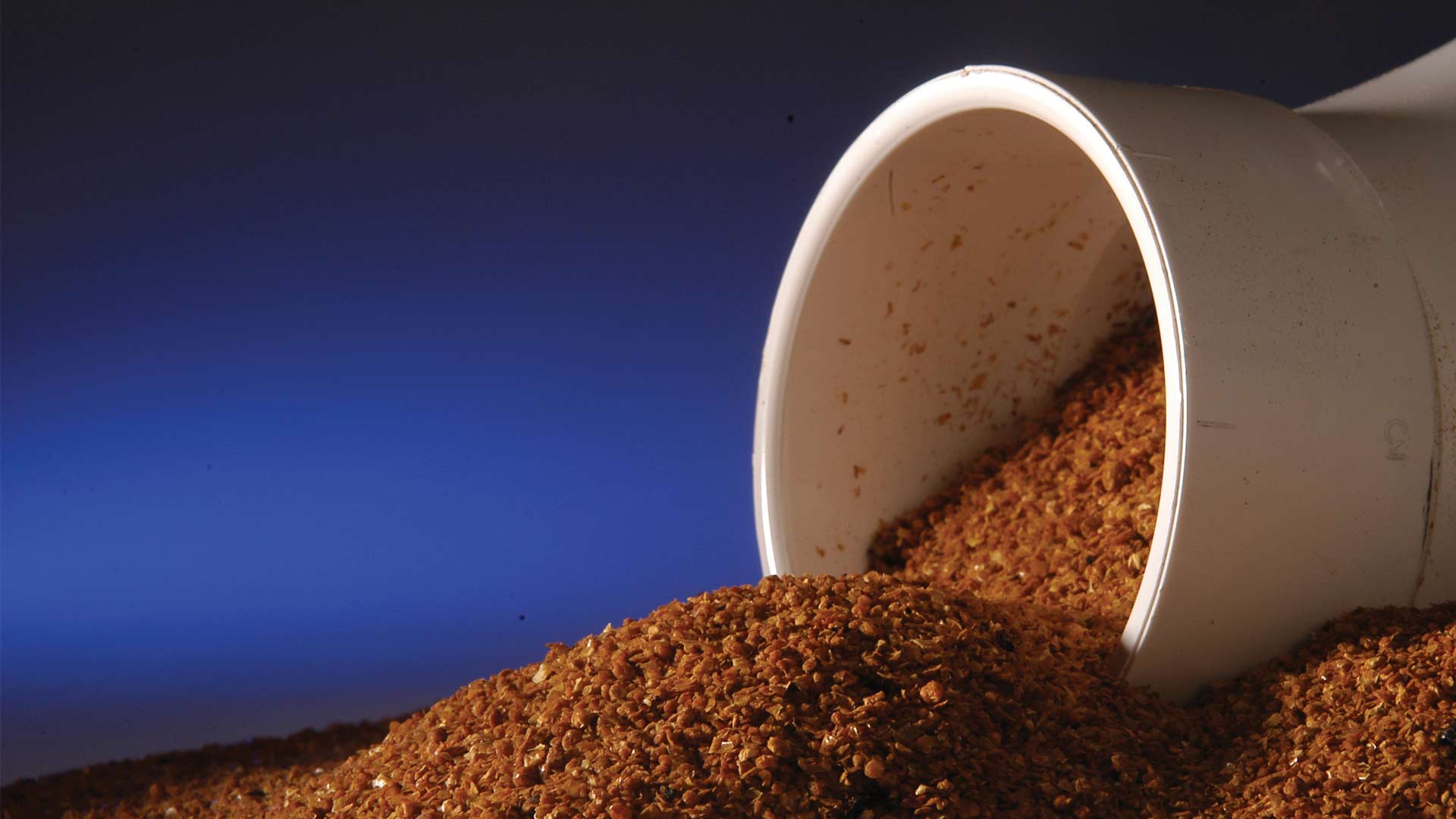–By Liz Morrison
Feeding corn distillers grains to beef cattle does not lead to higher levels of a harmful pathogen, E. coli O157:H7, in the animals’ digestive systems. That’s according to two new studies sponsored by AURI and the Minnesota Corn Research & Promotion Council
The E. coli O157:H7 (ECO157) organism, which is common in healthy cattle, can contaminate meat during slaughter, causing illness in humans. Earlier research had suggested a possible link between distillers grains in the diet and a higher incidence of ECO157, says University of Minnesota Professor of Animal Science Alfredo DiCostanzo. However, the two Minnesota studies found that including corn distillers grains in beef cattle rations had no effect on the prevalence of ECO157, says DiCostanzo, who led the research trials.
The results are good news for Minnesota cattle producers, who frequently include distillers grains in the feed, says Denny Timmerman, AURI project director and a former beef producer. “There’s been a lot of controversy about distillers grains and ECO157,” he says. “This research shows that the feeding practices beef producers use don’t cause disease.”
The ethanol industry also welcomes the research findings, Timmerman says. Cattle are the largest market for distillers grains, a coproduct of ethanol manufacturing; beef cattle consume 40% of U.S. annual DDGS output, which topped 32 million metric tons in 2010.
Cattle producers need answers
 Distillers grains are an economical, high-protein feed that’s been widely adopted by the Minnesota beef industry. “Ethanol plants and cattle producers create a symbiotic relationship,” Timmerman says. On the ethanol side, distillers grains sales account for as much as one-third of distillery revenues, according to the USDA. On the producer side, “The use of wet and dry distillers grains in beef cattle rations provides significant improvement in
Distillers grains are an economical, high-protein feed that’s been widely adopted by the Minnesota beef industry. “Ethanol plants and cattle producers create a symbiotic relationship,” Timmerman says. On the ethanol side, distillers grains sales account for as much as one-third of distillery revenues, according to the USDA. On the producer side, “The use of wet and dry distillers grains in beef cattle rations provides significant improvement in
feedlot performance.”
But research in 2008 at Kansas State University raised questions about the safety of distillers grains in cattle feed, suggesting a higher incidence of ECO157 in the manure of healthy animals that eat the feedstuff.
Although the Kansas research created a storm of publicity, the findings were not conclusive, the U of M’s DiCostanzo says. The relationship between feed ingredients, beef production practices, and ECO157 is extremely complicated, he says. Other variables, such as housing, bedding material, climate, season of the year, and feed processing may also affect pathogen levels.
All these complexities left Minnesota cattle producers searching for guidance, prompting the recent trials, which were carried out at the University of Minnesota’s cattle facilities.
Distillers grains trials
Two feeding trials were performed — one on calves that were artificially inoculated with the ECO157 pathogen, and one on naturally infected calves. Both trials looked at whether distillers grains in the diet affected the prevalence of ECO157 in the animals’ manure.
In addition, the trials with artificially inoculated calves looked at whether three other feed ingredients — steam flaked corn, dry rolled corn, and soy glycerin — when fed in combination with distillers grains, affected ECO157 levels.
This combination of dietary treatments was designed to tease out potential interactions between feed ingredients, DiCostanzo says. The aim was to “conclusively determine” if feeding distillers grains stimulates ECO157 in the digestive systems of cattle. The same experiments are now being repeated at Kansas State University.
By the end of the Minnesota feeding trials, “We found no relationship between dietary ingredients of any type and the incidence or prevalence of ECO157,” says DiCostanzo. That means Minnesota cattle producers can continue to feed distillers grains with confidence, he says.
Glycerin boosts growth
In an unexpected finding, the Minnesota experiments showed that adding 10 percent crude soy glycerin to beef finishing diets boosted growth rates by about 15 percent, a significant improvement. Preliminary results from the Kansas State University trials confirm those findings, DiCostanzo says.
Minnesota’s three biodiesel plants generate about 60 million gallons of crude soy glycerin a year. DiCostanzo encourages cattle producers to include glycerin in the feed, if it’s available. In addition to generating higher returns, liquid glycerin also improves feed handling, he adds.
A special thanks to our funding partner on this project:
Minnesota Corn Research & Promotion Council
AURI working to assure safe meat supply
The meat packing industry has made great strides in preventing harmful pathogens, such as E. coli O157:H7, from contaminating meat products during slaughter and processing, says AURI meat scientist Carissa Nath.
AURI and the University of Minnesota assist Minnesota meat processors in this effort by offering Hazard Analysis and Critical Control Point (HACCP) training workshops.
Every meat processor is required to have an HACCP plan, which identifies critical points where food safety dangers, or hazards, could occur. “The HACCP plan puts control measures in place to prevent these hazards from happening,” says Nath. “HACCP is really a proactive and preventative measure to protect consumers.”
AURI will offer two HACCP sessions in fall 2012: September 27-28 in Marshall and November 15-16 in St. Paul. For more information, contact Nath at 507.537.7440 or cnath@auri.org. Nath also does in-house food safety training with individual
meat processors.
“Food safety is the number one priority for all food processors,” Nath says.

